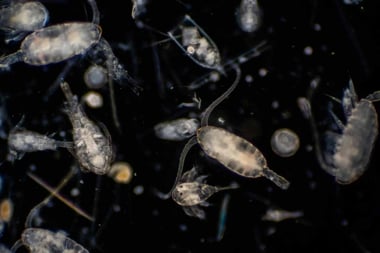Lead
Despite the switch to unleaded gasoline and decades of programs aimed at reducing lead exposure, the problem of lead poisoning, especially in children, remains widespread
Despite the switch to unleaded gasoline and decades of programs aimed at reducing lead exposure, the problem of lead poisoning, especially in children, remains widespread. It still affects up to 11.7 million children in the US alone. The reason may be that we have been overlooking a major source of lead in the environment.
In the middle of the 1970s, officials called it "the silent epidemic" because a serious buildup of lead in the body is easily overlooked and underappreciated. Of all the metal poisoning episodes to date, none has come close in sheer numbers.
Lead is a neurotoxin and can cause learning disabilities, behavioral problems and, at high accumulations, seizures, coma and death. Preschool children and fetuses are usually the most vulnerable. Among children, those two to three years of age may be most at risk for lead poisoning.
Programs to reduce exposure have been in place for over 20 years. Yet it is estimated that in some urban areas today, between 50 and 70 percent of children suffer from high levels of lead poisoning. Why?
Policies to reduce exposure have always been based on the assumption that the greatest hazard comes from lead-based paints. Paints decay and release lead on their surfaces in the form of toxic dust. To curb the threat, most lead-based paints have been removed from the market and parents have been advised to guard against children eating paint flakes. But such
measures only deal with part of the hazard.
The Bigger Problem
Paint is neither the most abundant nor the most accessible source of contamination. The clue to the problem lies in the shift in the demographics of lead poisoning: it now strikes primarily children who live in downtown areas or near highways.
Research conducted by Dr Howard Mielke of Xavier University of Louisiana, Dr Patrick Regan of the Midwest Environmental Education and Research Association in St Paul, Minnesota and others points to lead-contaminated soil.
In predictable locations in many cities, the soil is a giant reservoir of tiny particles of lead. Many children have the greatest risk for exposure in the yards around their houses and in playgrounds. Children are at particular risk from lead-containing soils because of their habit of putting their fingers into their mouths and playing in dirt. But not all children are affected.
Children in downtown areas play in soil that has been contaminated with up to 10 decades of leaded gasolines exhausted from cars and trucks and buses within the city streets.
Although lead-free gasoline is used today, there is no way for the lead build up in downtown soil to simply disappear. It is a toxic metallic element that won't break down. Because lead does not dissipate, biodegrade or decay, lead deposits in soil and dust become a long-term source of contamination. At best, some will wash away with water runoff, creating even greater pools of lead in drinking water supplies or low-lying lands.
In outlying areas, reduced exposure to traffic has resulted in lower soil content explaining the lower levels of lead in the blood of these children.
The Trail Answer
Trail, British Columbia, is the site of the largest lead-zinc smelter in North America. Initially, community leaders feared that alerting people to the hazards of the soil would drive people out of the area. But finally, a prevention program was put in place. Parents and childcare providers were educated about the problem and contaminated soils were covered with plants or wood chips. Play boxes containing clean sand were put into play areas as an alternative to bare soil. Service organizations such as the Kiwanis Club, the Knights of Columbus and the Rotary Club carried out landscaping projects on properties where parents could not afford to do it themselves.
Lead levels in Trail dropped significantly among children in three out of five years and remained stable during the other two years. Now, all Trail residents are routinely provided with information about the lead problem and are educated about preventive measures.
It is still essential to avoid lead-based paint and to handle the removal of leaded paints properly. Wallboard surfacing can effectively cut off contact with old, decaying, lead-based paint. Remember, the older the paint, the higher the lead content.
But to reduce exposure from soil, the safest measure is to prevent children from playing in bare earth, especially in play areas next to residential buildings in the inner city. Soils should also be covered and maintained with a tight and vigorous grass or alternative surface such as rubberized matting, bark, gravel, decking or cement.
It is as important for children in the general vicinity of highways to avoid contact with the soil, as it is for those living and playing downtown.
Nutrition Against Toxicity A number of studies indicates that deficiencies in certain nutrients can increase lead absorption and retention. Zinc, calcium and iron are indicated for reducing toxicity risk.
If you live in a city where fluoride is added to the public drinking water supply, such as Toronto or Calgary, there is increased danger of lead toxicity among adults and children. Studies show fluoride increases the amount of lead absorbed into the body (in addition to the damage that fluoride itself inflicts). Further, fluoride in the water system can leach lead from the pipe joints. If you live in a fluoridated area, you should consider drinking only distilled water or water treated with a reverse osmosis system. (You may also want to lobby to have fluoride removed from the public water supply for this and other health reasons.)
For children at risk for lead exposure, a blood test can prevent a lifetime spoiled by the irreversible damage caused by lead poisoning.




